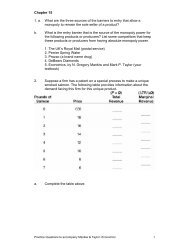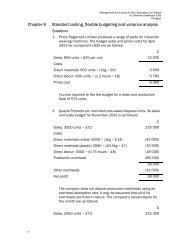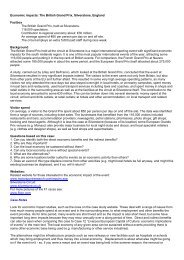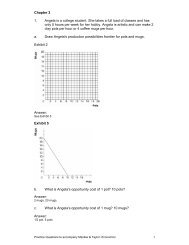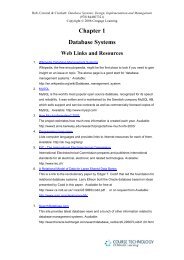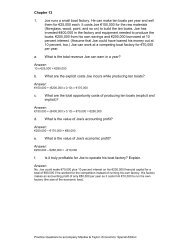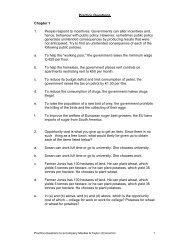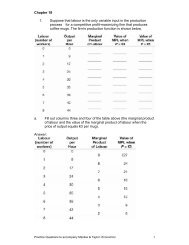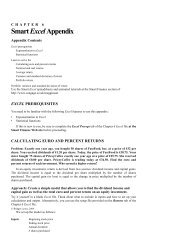Questions & Answers
Questions & Answers
Questions & Answers
Create successful ePaper yourself
Turn your PDF publications into a flip-book with our unique Google optimized e-Paper software.
3. The table below provides the demand schedule for motel rooms atSmall Town Motel. Use the information provided to complete the table.Answer the following questions based on your responses in the table.Use the midpoint method to calculate the percentage changes used togenerate the elasticities.Answer:a. Over what range of prices is the demand for motel rooms elastic? Tomaximize total revenue, should Small Town Motel raise or lower theprice within this range?Answer:€80 to €120; lower its pricesb. Over what range of prices is the demand for motel rooms inelastic? Tomaximize total revenue, should Small Town Motel raise or lower theprice within this range?Answer:€20 to €60; raise its pricesPractice <strong>Questions</strong> to accompany Mankiw & Taylor: Economics 2
c. Over what range of prices is the demand for motel rooms unit elastic?To maximize total revenue, should Small Town Motel raise or lower theprice within this range?Answer:€60 to €80; it doesn’t matter. For prices in this range, a change in price proportionatelychanges the quantity demanded so total revenue is unchanged.4. The demand schedule from question 3 above is reproduced belowalong with another demand schedule when consumer incomes haverisen to €60,000 from €50,000. Use this information to answer thefollowing questions. Use the midpoint method to calculate thepercentage changes used to generate the elasticities.a. What is the income elasticity of demand when motel rooms rent for€40?Answer:(10/25)/(€10,000/€55,000) = 2.2b. What is the income elasticity of demand when motel rooms rent for€100?Answer:(10/13)/(€10,000/€55,000) = 4.2c. Are motel rooms normal or inferior goods? Why?Answer:Normal goods, because the income elasticity of demand is positive.d. Are motel rooms likely to be necessities or luxuries? Why?Answer:Luxuries, because the income elasticity of demand is large (greater than 1). In each case, an18 percent increase in income caused a much larger increase in quantity demanded.Practice <strong>Questions</strong> to accompany Mankiw & Taylor: Economics 3




